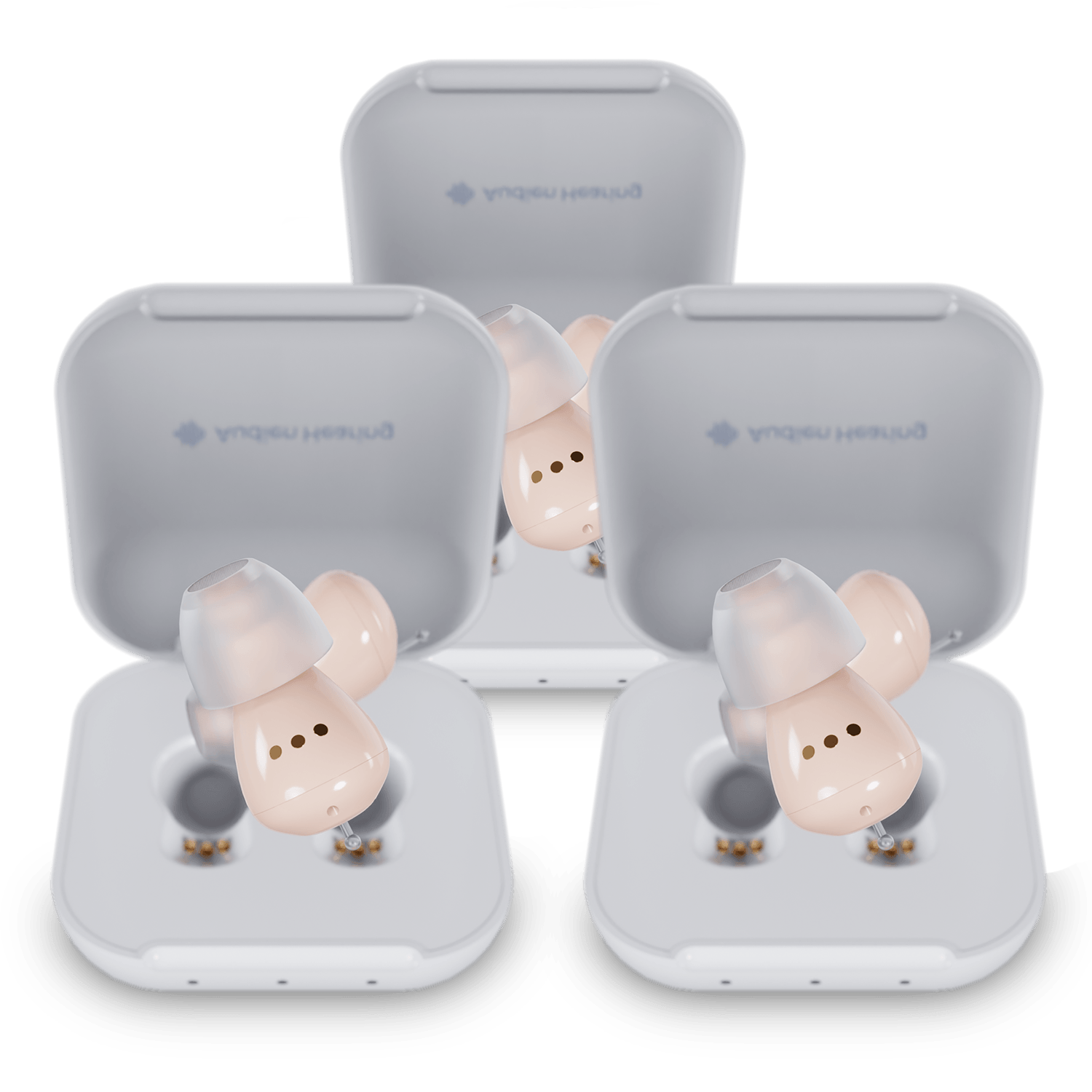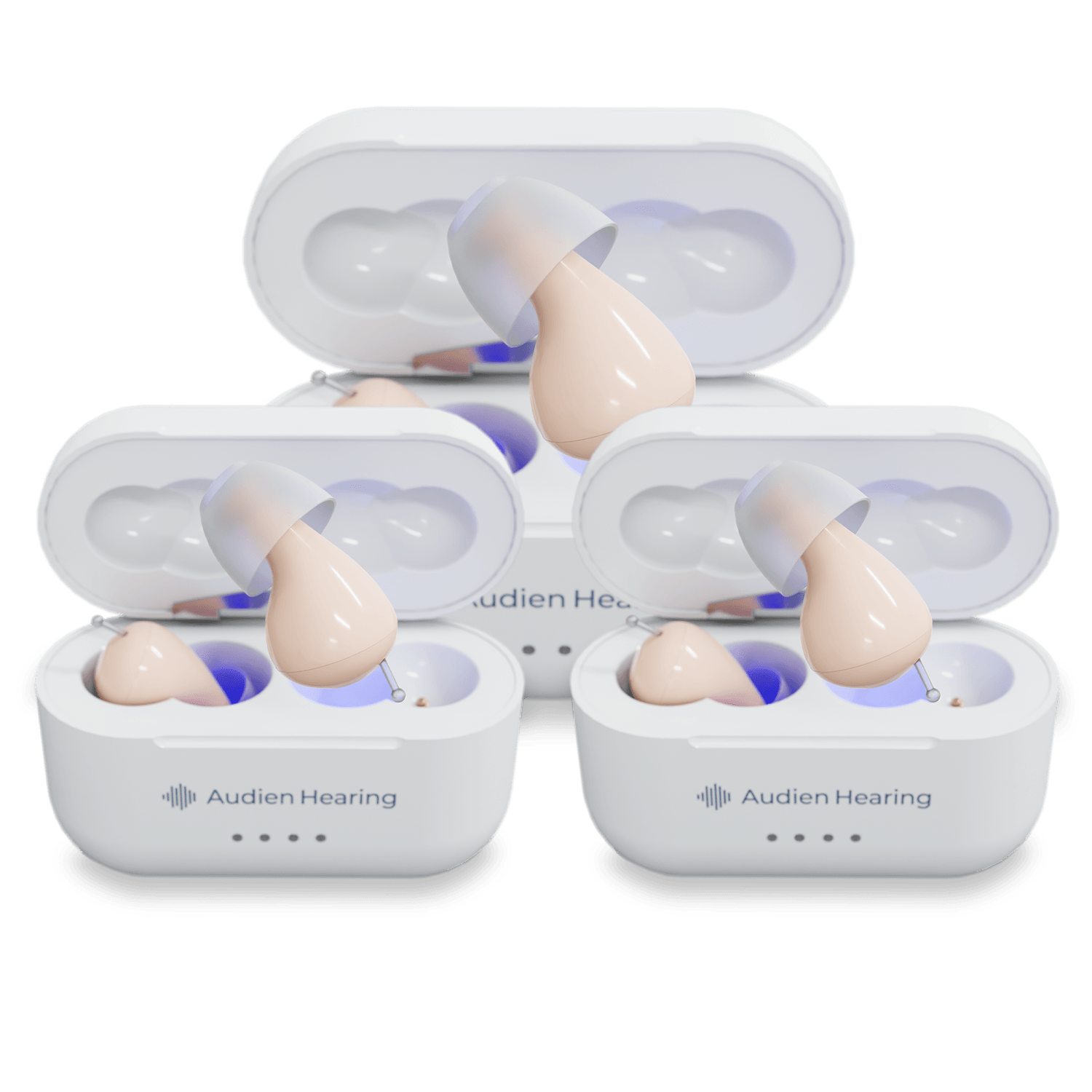Ear wax is a naturally occurring substance that the body produces to help protect your ears. Contrary to what you most likely grew up believing, the wax in your ear should be generally left alone. The ears are a self-cleansing organ and do not need to be cleaned under normal circumstances.
With that being said, there are instances in which earwax can build up and cause a number of potential hearing problems like tinnitus, earaches, and even hearing loss in some cases.
Discover the potential causes of impacted ear wax as well as ways to prevent and treat a wax impaction.
What Is Ear Wax and What Is Its Purpose?

Ear wax, also known as cerumen, is a sticky yellow substance that helps to protect the ears. When you think about it, the ear canal is essentially a small-sized hole in the side of your head that leads to the delicate membrane of the eardrum.
Without ear wax, injuries and infections to the inner regions of the ear may be more prevalent. Below is a closer look at the specific qualities of ear wax that impose a benefit to the ear.
Sticky
Without earwax in your ear, every time you go to the beach or go underwater, particulates would find their way deep into your ear canal and get stuck there. This represents the first function of earwax in that it helps to trap foreign particles from entering deeper parts of the ear.
These particles include dirt, dust, and dead skin cells. By lining the external auditory canal, it essentially acts as a sticky trap for your ears (like flypaper and insects).
Self-Cleansing
The second function of ear wax is to promote the expulsion of these particles from the ear. Earwax is able to do this thanks to the ear’s constant production of ear wax. New wax is constantly being produced, which helps to move older wax slowly out of the ear. Even moving your jaw and chewing can help with ear wax removal.
Antimicrobial
The final function of earwax is that it has natural antimicrobial properties. The ear canals make a tempting home for many bacteria because it is generally shielded, dark, warm, and moist. Earwax, however, makes the earwax less inhabitable thanks to its antimicrobial properties.
Impacted Ear Wax Causes
Under normal circumstances, ear wax is self-maintaining, but there are instances in which the wax can get stuck in the canal and build up in the affected ear. Some buildup on occasion is nothing to worry about.
The ears are fairly good at expelling it on their own, but severe buildup known as cerumen impaction can occur. (Cerumen are the secretions made by ear glands.)
Impacted earwax is essentially a buildup of earwax that becomes hardened and can block the ear canal entirely. There are a number of potential causes of ear wax impaction, and below is a look at some of those causes.
Understanding what can increase the likelihood of ear wax impaction can allow you to make changes in your life to reduce the chances of developing severe wax buildup.
Cotton Swabs
People frequently utilize cotton swabs to clean their ears. Even though you may have grown up using cotton swabs after your shower, medical expertise advises against their use entirely for ear cleaning.
The main reason that cotton swabs are not recommended for ear cleanings is that they can increase your chances of sustaining an eardrum injury. In fact, audiologists, otologists, and physicians alike tend to recommend that you avoid utilizing any cleaning tool that enters the ear canal.
While it may seem counterintuitive that cotton swabs can cause a buildup of wax, the truth is that they can increase the chances of an ear wax impaction. When you put a cotton swab in the ear, you don’t have a clear view of what is going on.
So, it is possible to push wax deeper into the ear rather than removing it. Repeat use of cotton swabs in this way can slowly lead to an accumulation and an eventual impaction.
Clinical practice guidelines also advise against using ear candles for the manual removal of excess wax as well.
Frequent Headphone Use
Headphones are a great way to listen to your favorite tunes, podcast, or television show. The convenience of wireless headphones has exploded in recent years. Many people spend hours at a time consuming audio through their headphones.
While headphones are a great tool for many, they may have the ability to contribute to ear wax impaction. The main reason why they increase the chances of ear wax accumulation is that they block the entrance of the ear canal. Wax is continuously and slowly moving out of the ear canal, and by blocking the canal with earbuds, you are effectively corking the ears. This can lead to a buildup.
This is why you may notice excessive earwax residue on the tips of your earbuds after having them in for a while. Even over-ear headphones can increase your chances of excessive ear wax because they trap moisture around the ear.
This doesn't mean that you should stop using your headphones. Just consider taking a break every now and again to allow your ears to breathe. As an example, if you wear headphones while you work, you should try and give your ears a ten to 20-minute break after an hour of wearing them. Similarly, earplugs can cause similar complications.
Narrowed Ear Canal
Another potential cause of impacted ear wax is naturally narrow ear canals. No two people are exactly alike, and there are a number of different variations across people. One of those potential differences is in the size of your ear canal.
The ear canal is the structure that channels sound to the eardrum. Your size and genetics tend to dictate how large your ear canal is. If your ear canal is smaller than average, it could lead to an increased likelihood of ear wax buildup and impaction.
This occurs because having a smaller area in the ear canal means that less wax is needed to fill the area and cause a blockage. Think of it in terms of pipes — it is much easier to clog a pipe with a smaller diameter than one that has a larger diameter.
Eczema
Eczema is a condition of the skin that can result in dry, itchy, irritated, and scaly skin. While not a primary symptom of eczema, there is a possibility of developing ear wax blockages due to the skin condition.
Essentially if an eczema flare occurs around the ears, the added inflammation and dryness to the area can increase the chances of an earwax buildup. One of the jobs of ear wax is to remove dead skin from the ear.
With eczema, there is added dryness which can increase the amount of flaking skin that needs to be removed. Dried skin increases the density of wax. Eventually, enough skin can combine with the wax where it is unable to be removed on its own.
Treatments for Impacted Ear Wax

Impacted earwax can cause a number of symptoms, such as tinnitus and hearing loss. Luckily, many of these symptoms subside when the blockage is properly removed. While the removal of ear wax may seem easy enough, there are methods that are better and safer than others.
Here are the best methods for treating impacted ear wax.
Oil
One method that you may consider unconventional is the use of oil to help with an ear wax blockage. Oil can help with impacted ear wax because it will soften the blockage. Simply placing a few drops of oil in your ear on a daily basis over a period of a few weeks can help to soften the blockage. This will make it malleable enough for the wax to vacate the ears naturally.
Some oil types to consider are mineral oil and baby oil.
Oil is not the quickest method to treat impacted earwax, but it is one of the safest. For more immediate treatments, oil may be used as a pre-treatment to help in the wax extraction.
Ear Irrigation
Another popular method is known as ear irrigation which utilizes water to flush out the ears. Typically warmed saline solution is utilized and placed into a bulb syringe. The solution is then sprayed into the ear gently, and this can help to remove an impaction.
Ear Cleaning Solutions
An ear cleaning solution is another option. Ear cleaning solutions tend to contain some form of peroxide that bubbles upon contact—like hydrogen peroxide, glycerin, and Debrox. The bubbling helps to break down the wax and helps it to dissolve into the solution.
You typically lay on one side, allow the solution to sit for some time, and then you invert your head to allow the solution and any dissolved wax to drain out of the ear.
Earwax Removal Under the Microscope
Impacted earwax consists of a buildup of earwax that causes a blockage. Impacted ear wax can be a potential cause of conductive hearing loss or tinnitus.
While these symptoms can be concerning, there are treatments like ear irrigation that can essentially reverse hearing loss by removing the blockage.
Sources
Human antimicrobial proteins in ear wax | NCBI
Ear Eczema | National Eczema Society
Earwax: Blockage Symptoms, How to Remove & Clean | Cleveland Clinic
The ear canal: Anatomy, diagram, and common conditions | Medical News Today













